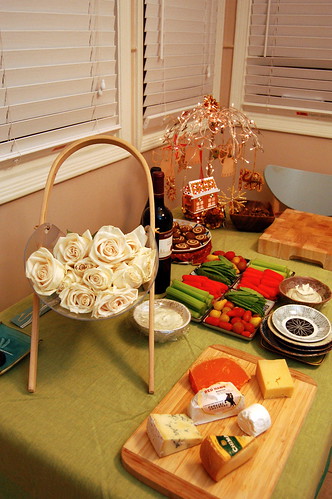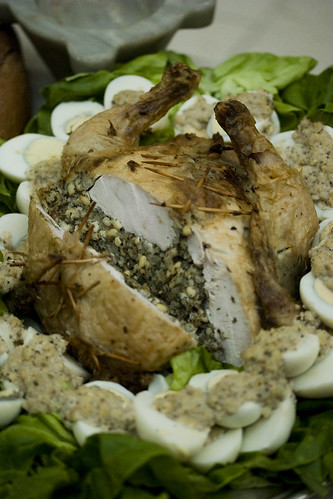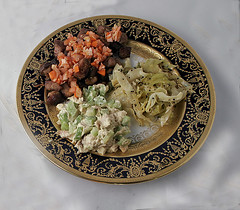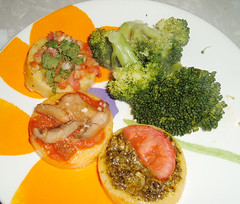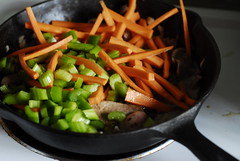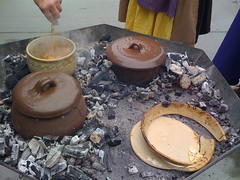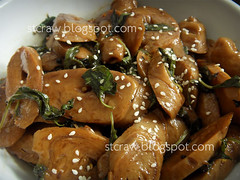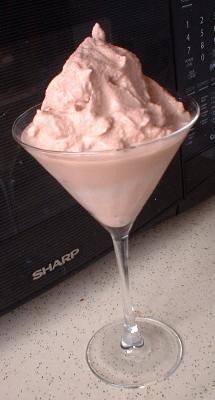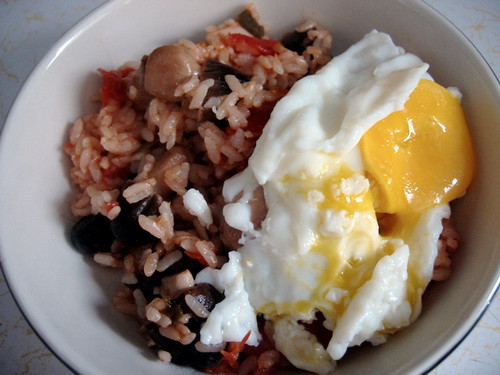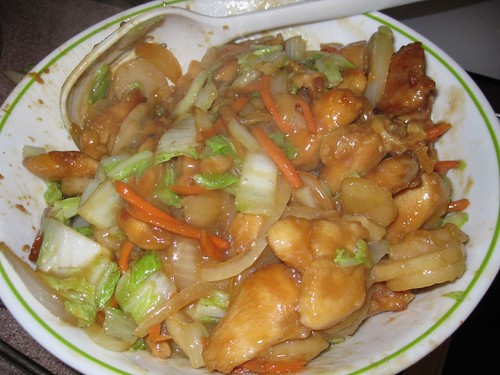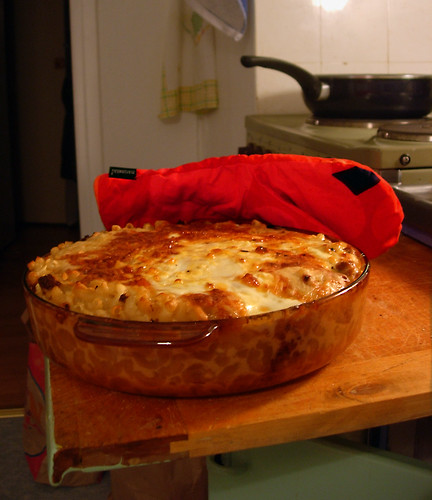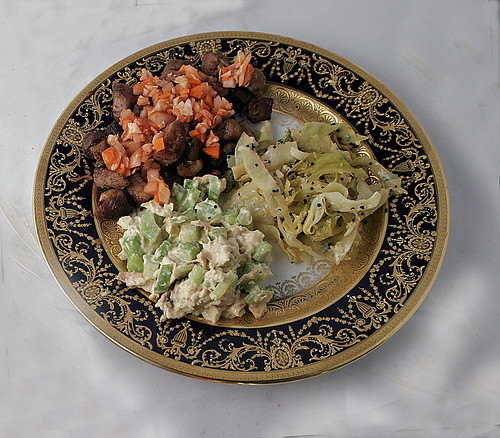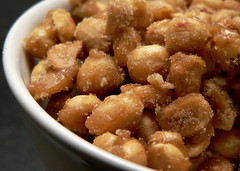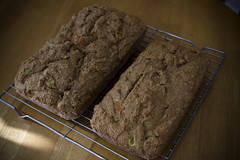Check out these norwegian food recipes images:
Endive salad
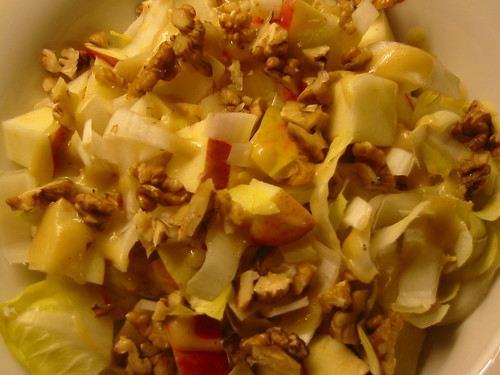
Image by andedam
Recipe (in Norwegian) at matformons.blogspot.com/2005/12/endivesalat.html
Norwegian Cinnamon buns
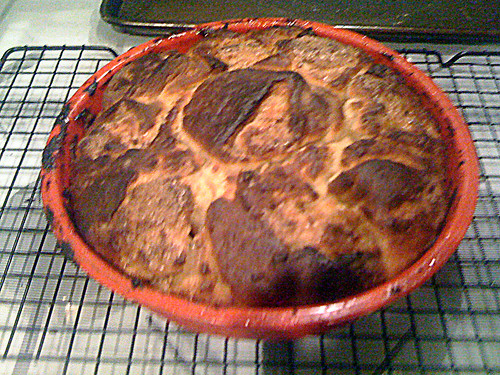
Image by ramtops
Recipe at www.nibblous.com/recipe/2243
Meat

Image by Joost J. Bakker IJmuiden
Meat
Meat is animal flesh that is used as food. Most often, this means the skeletal muscle and associated fat, but it may also describe other edible tissues such as organs, livers, skin, brains, bone marrow, kidneys, or lungs. The word meat is also used by the meat packing industry in a more restrictive sense—the flesh of mammalian species (pigs, cattle, lambs, etc.) raised and prepared for human consumption, to the exclusion of fish and poultry.
Etymology
The word meat comes from the Old English word mete, which referred to food in general. The term is related to mad in Danish, mat in Swedish and Norwegian, and matur in Icelandic, which also mean 'food'. The word "mete" also exists in Old Frisian (and to a lesser extent, modern West Frisian) to denote important food, differentiating it from "swiets" (sweets) and "dierfied" (animal feed).
One definition that refers to meat as not including fish developed over the past few hundred years and has religious influences. The distinction between fish and "meat" is codified by the Jewish dietary law of kashrut, regarding the mixing of milk and meat, which does not forbid the mixing of milk and fish. Modern Jewish legal practice (halakha) on kashrut classifies the flesh of both mammals and birds as "meat"; fish are considered to be parve, neither meat nor a dairy food. The Catholic dietary restriction on "meat" on Fridays also does not apply to the cooking and eating of fish.
The Latin word carō "meat" (also the root of 'carnal', referring to the 'pleasures of the flesh') is often a euphemism for sexual pleasure, effected from the function performed by fleshy organs. Thus 'meat' may refer to the human body in a sensual, or sexual, connotation. A meat market, in addition to simply denoting a market where meat is sold, also refers to a place or situation where humans are treated or viewed as commodities, especially a place known as one where a sexual partner may be found.
"Meat" may also be used to refer to humans humorously or indifferently. In military slang, "meat shield" refers to soldiers sent towards an enemy to draw fire away from another unit
History
Meat constituted a substantial proportion of even the earliest humans' diet, paleontological evidence suggests. Early hunter-gatherers depended on the organized hunting of large animals such as bison and deer.
The domestication of animals, of which we have evidence dating back to the end of the last glacial period (c. 10,000 years BP), allowed the systematic production of meat and the breeding of animals with a view to improving meat production. The animals which are now the principal sources of meat were domesticated in conjunction with the development of early civilizations:
Sheep, originating from western Asia, were domesticated with the help of dogs prior to the establishment of settled agriculture, likely as early as the eighth millennium BC. Several breeds of sheep were established in ancient Mesopotamia and Egypt by 3500–3000 BC. Presently, more than 200 sheep breeds exist.
Cattle were domesticated in Mesopotamia after settled agriculture was established about 5000 BC, and several breeds were established by 2500 BC. Modern domesticated cattle fall into the groups Bos taurus (European cattle) and Bos indicus (zebu), both descended from the now-extinct Aurochs. The breeding of beef cattle, cattle optimized for meat production as opposed to animals best suited for draught or dairy purposes, began in the middle of the 18th century.
Domestic pigs, which are descended from wild boars, are known to have existed about 2500 BC in modern-day Hungary and in Troy; earlier pottery from Jericho and Egypt depicts wild pigs. Pork sausages and hams were of great commercial importance in Greco-Roman times. Pigs continue to be bred intensively as they are being optimized to produce meat best suited for specific meat products.
Modern agriculture employs a number of techniques, such as progeny testing, to make animals evolve rapidly towards having the qualities desired by meat producers. For instance, in the wake of well-publicised health concerns associated with saturated fats in the 1980s, the fat content of UK beef, pork and lamb fell from 20–26 percent to 4–8 percent within a few decades, both due to selective breeding for leanness and changed methods of butchery.Methods of genetic engineering aimed at improving the meat production qualities of animals are now also becoming available.
Even though it is a very old industry, meat production continues to be shaped strongly by the rapidly evolving demands of customers. The trend towards selling meat in pre-packaged cuts has increased the demand for larger breeds of cattle, which are better suited to producing such cuts. Ever more animals not previously exploited for their meat are now being farmed, especially the more agile and mobile species, whose muscles tend to be developed better than those of cattle, sheep or pigs. Examples include the various antelope species, the zebra, water buffalo and camel, as well as non-mammals such as the crocodile, emu and ostrich. Another important trend in contemporary meat production is organic farming which, while providing no organoleptic benefit to meat so produced, meets an increasing demand for numerous reasons.
Growth and development of meat animals
Genetics
Several economically important traits in meat animals are heritable to some degree (see the table to the right) and can thus be selected for by breeding. In cattle, certain growth features are controlled by recessive genes which have not so far been controlled, complicating breeding. One such trait is dwarfism; another is the doppelender or "double muscling" condition, which causes muscle hypertrophy and thereby increases the animal's commercial value. Genetic analysis continues to reveal the genetic mechanisms that control numerous aspects of the endocrine system and, through it, meat growth and quality.
Genetic engineering techniques can shorten breeding programmes significantly because they allow for the identification and isolation of genes coding for desired traits, and for the reincorporation of these genes into the animal genome.[18] To enable such manipulation, research is ongoing (as of 2006[update]) to map the entire genome of sheep, cattle and pigs. Some research has already seen commercial application. For instance, a recombinant bacterium has been developed which improves the digestion of grass in the rumen of cattle, and some specific features of muscle fibres have been genetically altered.
Experimental reproductive cloning of commercially important meat animals such as sheep, pig or cattle has been successful. The multiple asexual reproduction of animals bearing desirable traits can thus be anticipated,although this is not yet practical on a commercial scale.
Environment
Heat regulation in livestock is of great economic significance, because mammals attempt to maintain a constant optimal body temperature. Low temperatures tend to prolong animal development and high temperatures tend to retard it. Depending on their size, body shape and insulation through tissue and fur, some animals have a relatively narrow zone of temperature tolerance and others (e.g. cattle) a broad one. Static magnetic fields, for reasons still unknown, also retard animal development.
Nutrition
The quality and quantity of usable meat depends on the animal's plane of nutrition, i.e., whether it is over- or underfed. Scientists disagree, however, about how exactly the plane of nutrition influences carcass composition.
The composition of the diet, especially the amount of protein provided, is also an important factor regulating animal growth. Ruminants, which may digest cellulose, are better adapted to poor-quality diets, but their ruminal microorganisms degrade high-quality protein if supplied in excess. Because producing high-quality protein animal feed is expensive (see also Environmental impact below), several techniques are employed or experimented with to ensure maximum utilization of protein. These include the treatment of feed with formalin to protect amino acids during their passage through the rumen, the recycling of manure by feeding it back to cattle mixed with feed concentrates, or the partial conversion of petroleum hydrocarbons to protein through microbial action.
In plant feed, environmental factors influence the availability of crucial nutrients or micronutrients, a lack or excess of which can cause a great many ailments. In Australia, for instance, where the soil contains limited phosphate, cattle are being fed additional phosphate to increase the efficiency of beef production. Also in Australia, cattle and sheep in certain areas were often found losing their appetite and dying in the midst of rich pasture; this was at length found to be a result of cobalt deficiency in the soil. Plant toxins are also a risk to grazing animals; for instance, fluoracetate, found in some African and Australian plants, kills by disrupting the cellular metabolism.[25] Certain man-made pollutants such as methylmercury and some pesticide residues present a particular hazard due to their tendency to bioaccumulate in meat, potentially poisoning consumers.
Human intervention
Meat producers may seek to improve the fertility of female animals through the administration of gonadotrophic or ovulation-inducing hormones. In pig production, sow infertility is a common problem, possibly due to excessive fatness. No methods currently exist to augment the fertility of male animals. Artificial insemination is now routinely used to produce animals of the best possible genetic quality, and the efficiency of this method is improved through the administration of hormones that synchronize the ovulation cycles within groups of females.
Growth hormones, particularly anabolic agents such as steroids, are used in some countries to accelerate muscle growth in animals. This practice has given rise to the beef hormone controversy, an international trade dispute. It may also decrease the tenderness of meat, although research on this is inconclusive,[30] and have other effects on the composition of the muscle flesh. Where castration is used to improve control over male animals, its side effects are also counteracted by the administration of hormones.
Sedatives may be administered to animals to counteract stress factors and increase weight gain. The feeding of antibiotics to certain animals has been shown to improve growth rates also. This practice is particularly prevalent in the USA, but has been banned in the EU, partly because it causes antibiotic resistance in pathogenic microorganisms.
Biochemical composition
Numerous aspects of the biochemical composition of meat vary in complex ways depending on the species, breed, sex, age, plane of nutrition, training and exercise of the animal, as well as on the anatomical location of the musculature involved. Even between animals of the same litter and sex there are considerable differences in such parameters as the percentage of intramuscular fat.
Main constituents
Adult mammalian muscle flesh consists of roughly 75 percent of water, 19 percent of protein, 2.5 percent of intramuscular fat, 1.2 percent of carbohydrates and 2.3 percent of other soluble non-protein substances. These include nitrogenous compounds, such as amino acids, and inorganic substances such as minerals.
Muscle proteins are either soluble in water (sarcoplasmic proteins, about 11.5 percent of total muscle mass) or in concentrated salt solutions (myofibrillar proteins, about 5.5 percent of mass).[36] There are several hundred sarcoplasmic proteins. Most of them – the glycolytic enzymes – are involved in the glycolytic pathway, i.e., the conversion of stored energy into muscle power. The two most abundant myofibrillar proteins, myosin and actin, are responsible for the muscle's overall structure. The remaining protein mass consists of connective tissue (collagen and elastin) as well as organelle tissue.
Fat in meat can be either adipose tissue, used by the animal to store energy and consisting of "true fats" (esters of glycerol with fatty acids),[40] or intramuscular fat, which contains considerable quantities of phospholipids and of unsaponifiable constituents such as cholesterol.
Red and white meat
Meat can be broadly classified as "red" or "white" depending on the concentration of myoglobin in muscle fibre. When myoglobin is exposed to oxygen, reddish oxymyoglobin develops, making myoglobin-rich meat appear red. The redness of meat depends on species, animal age, and fibre type: Red meat contains more narrow muscle fibres that tend to operate over long periods without rest, while white meat contains more broad fibres that tend to work in short fast bursts.
The meat of adult mammals such as cows, sheep, goats, and horses is generally considered red, while domestic chicken and turkey breast meat is generally considered white.
Production
Main articles: Animal slaughter, Slaughterhouse, and Butchery
Meat is produced by killing the animal in question and cutting the desired flesh out of it. These procedures are called slaughter and butchery, respectively.
Attesting to the long history of meat consumption in human civilizations, ritual slaughter has become part of the practice of several religions. These rituals, as well as other pre-industrial meat production methods such as these used by indigenous peoples, are not detailed here. This section will instead provide an overview of contemporary industrialized meat production in dedicated slaughterhouses from cattle, sheep and pigs.
Transport
Upon reaching a predetermined age or weight, livestock are transported en masse from the farm to the slaughterhouse, a process called "live export". Depending on its length and circumstances, this exerts stress and injuries on the animals, and some may die en route. Apart from being arguably inhumane, unnecessary stress in transport may adversely affect the quality of the meat. In particular, the muscles of stressed animals are low in water and glycogen, and their pH fails to attain acidic values, all of which results in poor meat quality. Consequently, and also due to campaigning by animal welfare groups, laws and industry practices in several countries tend to become more restrictive with respect to the duration and other circumstances of livestock transports.
Slaughter
Animals are slaughtered by being first stunned and then exsanguinated (bled out). Death results from the one or the other procedure, depending on the methods employed. Stunning can be effected through asphyxiating the animals with carbon dioxide, shooting them with a gun or a captive bolt pistol, or shocking them with electric current. In most forms of ritual slaughter, stunning is not allowed.
Draining as much blood as possible from the carcase is necessary because blood causes the meat to have an unappealing appearance and is a very good breeding ground for microorganisms.[45] The exsanguination is accomplished by severing the carotid artery and the jugular vein in cattle and sheep, and the anterior vena cava in pigs.
Dressing and cutting
After exsanguination, the carcass is dressed, that is, the head, feet, hide (except hogs and some veal), excess fat, viscera and offal are removed, leaving only bones and edible muscle. Cattle and pig carcases, but not those of sheep, are then split in half along the mid ventral axis, and the carcase is cut into wholesale pieces. The dressing and cutting sequence, long a province of manual labor, is progressively being fully automated.
Conditioning
Under hygienic conditions and without other treatment, meat can be stored at above its freezing point (–1.5 °C) for about six weeks without spoilage, during which time it undergoes an aging process that increases its tenderness and flavor.
During the first day after death, glycolysis continues until the accumulation of lactic acid causes the pH to reach about 5.5. The remaining glycogen, about 18 g per kg, is believed to increase the water-holding capacity and tenderness of the flesh when cooked. Rigor mortis sets in a few hours after death as ATP is used up, causing actin and myosin to combine into rigid actomyosin and lowering the meat's water-holding capacity,[50] causing it to lose water ("weep"). In muscles that enter rigor in a contracted position, actin and myosin filaments overlap and cross-bond, resulting in meat that is tough on cooking – hence again the need to prevent pre-slaughter stress in the animal.
Over time, the muscle proteins denature in varying degree, with the exception of the collagen and elastin of connective tissue, and rigor mortis resolves. Because of these changes, the meat is tender and pliable when cooked just after death or after the resolution of rigor, but tough when cooked during rigor. As the muscle pigment myoglobin denatures, its iron oxidates, which may cause a brown discoloration near the surface of the meat. Ongoing proteolysis also contributes to conditioning. Hypoxanthine, a breakdown product of ATP, contributes to the meat's flavor and odor, as do other products of the discomposition of muscle fat and protein.
Spoilage and preservation
Main articles: Meat spoilage and Meat preservation
The spoilage of meat occurs, if untreated, in a matter of hours or days and results in the meat becoming unappetizing, poisonous or infectious. Spoilage is caused by the practically unavoidable infection and subsequent decomposition of meat by bacteria and fungi, which are borne by the animal itself, by the people handling the meat, and by their implements. Meat can be kept edible for a much longer time – though not indefinitely – if proper hygiene is observed during production and processing, and if appropriate food safety, food preservation and food storage procedures are applied.
Methods of preparation
Meat is prepared in many ways, as steaks, in stews, fondue, or as dried meat like beef jerky. It may be ground then formed into patties (as hamburgers or croquettes), loaves, or sausages, or used in loose form (as in "sloppy joe" or Bolognese sauce). Some meat is cured, by smoking, pickling, preserving in salt or brine (see salted meat and curing). Other kinds of meat are marinated and barbecued, or simply boiled, roasted, or fried. Meat is generally eaten cooked, but there are many traditional recipes that call for raw beef, veal or fish (tartare). Meat is often spiced or seasoned, as in most sausages. Meat dishes are usually described by their source (animal and part of body) and method of preparation.
Meat is a typical base for making sandwiches. Popular varieties of sandwich meat include ham, pork, salami and other sausages, and beef, such as steak, roast beef, corned beef, and pastrami. Meat can also be molded or pressed (common for products that include offal, such as haggis and scrapple) and canned.
Nutritional benefits and concerns
All muscle tissue is very high in protein, containing all of the essential amino acids, and in most cases is a good source of zinc, vitamin B12, selenium, phosphorus, niacin, vitamin B6, iron and riboflavin. Several forms of meat are high in vitamin K2, which is only otherwise known to be found in fermented foods[citation needed], with natto having the highest concentration. Muscle tissue is very low in carbohydrates and does not contain dietary fiber. The fat content of meat can vary widely depending on the species and breed of animal, the way in which the animal was raised, including what it was fed, the anatomical part of the body, and the methods of butchering and cooking. Wild animals such as deer are typically leaner than farm animals, leading those concerned about fat content to choose game such as venison. Decades of breeding meat animals for fatness is being reversed by consumer demand for meat with less fat.
Red meat, such as beef, pork, and lamb, contains many essential nutrients necessary for healthy growth and development in children. Nutrients in red meat include iron, zinc, vitamin B12, and protein. Most meats contain a full complement of the amino acids required for the human diet. Fruits and vegetables, by contrast, are usually lacking several essential amino acids contained in meat. It is for this reason that people who abstain from eating all meat need to plan their diet carefully to include sources of all the necessary amino acids.
The table in this section compares the nutritional content of several types of meat. While each kind of meat has about the same content of protein and carbohydrates, there is a very wide range of fat content. It is the additional fat that contributes most to the calorie content of meat, and to concerns about dietary health.
In recent years, health concerns have been raised about the consumption of meat. In a large-scale study, the consumption of red meat over a lifetime was found to raise the risk of cancer by 20 to 60 percent[citation needed], while causing adverse mutations in DNA. In particular, red meat and processed meat were found to be associated with higher risk of cancers of the lung, esophagus, liver, and colon, among others.[59] Another study found an increase risk of pancreatic cancer for red meat and pork.[60] That study also suggests that fat and saturated fat are not likely contributors to pancreatic cancer. Animal fat, particularly from ruminants, tends to have a higher percentage of saturated fat vs. monounsaturated and polyunsaturated fat when compared to vegetable fats, with the exception of some tropical plant fats;[61] consumption of which has been correlated with various health problems. The saturated fat found in meat has been associated with significantly raised risks of colon cancer, although evidence suggests that risks of prostate cancer are unrelated to animal fat consumption.
Meat has been correlated to increased risk of heart disease. The risks of heart disease are three times greater for 45-64 year old men who eat meat daily, versus those who did not eat meat, according to one survey.
A 2009 study by the National Cancer Institute revealed a correlation between the consumption of red meat and increased mortality from cancer and cardiovascular diseases. This study has been criticized for using an improperly validated food frequency questionnaire, which has been shown to have low levels of accuracy [68][69]
In response to changing prices as well as health concerns about saturated fat and cholesterol, consumers have altered their consumption of various meats. A USDA report points out that consumption of beef in the United States between 1970–1974 and 1990–1994 dropped by 21%, while consumption of chicken increased by 90%. During the same period of time, the price of chicken dropped by 14% relative to the price of beef. In 1995 and 1996, beef consumption increased due to higher supplies and lower prices.
Cooking meat
Meat, like any food, can also transmit certain diseases, but complete cooking and avoiding recontamination reduces this possibility.
Several studies published since 1990 indicate that cooking muscle meat creates heterocyclic amines (HCAs), which are thought to increase cancer risk in humans. Researchers at the National Cancer Institute published results of a study which found that human subjects who ate beef rare or medium-rare had less than one third the risk of stomach cancer than those who ate beef medium-well or well-done.[70] While eating muscle meat raw may be the only way to avoid HCAs fully, the National Cancer Institute states that cooking meat below 212 °F (100 °C) creates "negligible amounts" of HCAs. Also, microwaving meat before cooking may reduce HCAs by 90%.
Nitrosamines, present in processed and cooked foods, have been noted as being carcinogenic, being linked to colon cancer. Also, toxic compounds called PAHs, or Polycyclic aromatic hydrocarbons, present in processed, smoked and cooked foods, are known to be carcinogenic.
Ethics of eating meat
Ethical issues regarding the consumption of meat can include objections to the act of killing animals or the agricultural practices surrounding the production of meat. Reasons for objecting to the practice of killing animals for consumption may include animal rights, environmental ethics, religious doctrine, or an aversion to inflicting pain or harm on other living creatures. The religion of Jainism has always opposed eating meat, and there are also many schools of Buddhism and Hinduism that condemn the eating of meat. Some people, while not vegetarians, refuse to eat the flesh of certain animals, such as cats, dogs, horses, or rabbits, due to cultural or religious taboo. In some cases, specific meats (especially from pigs and cows) are forbidden within religious traditions. Some people eat only the flesh of animals which they believe have not been mistreated, and abstain from the meat of animals reared in factory farms or from particular products such as foie gras and veal
In vitro and imitation
Various forms of imitation meat have been created to satisfy people wishing to reduce or eliminate their meat consumption and still taste the flavor and texture of meat. They are typically some form of processed soybean, (tofu, tempeh), but they can also be based on wheat gluten or even fungus (quorn).
in vitro meat also known as cultured meat, is animal flesh that has never been part of a complete, living animal. Several research projects are currently experimentally growing in vitro meat, but no meat has yet been produced for public consumption. In vitro meat consists of natural meat cells and should be seen as a possible way of producing normal meat in a much healthier, safer and environmental way. The goal is to grow fully developed muscle organs, but the first generation will most likely be minced meat products.
Environmental impact
The UN Food and Agriculture Organization (FAO) has estimated that direct emissions from meat production account for about 18% of the world's total greenhouse gas emissions. The FAO figure accounts for the entire meat production cycle - clearing forested land, making and transporting fertiliser, burning fossil fuels in agricultural machinery, and the front and rear end emissions of cattle and sheep.
Animals fed on grain need more water than grain crops.[citation needed] In tracking food animal production from the feed through to the dinner table, the inefficiencies of grain fed meat, milk and egg production range from a 4:1 energy input to protein output ratio up to 54:1. The result is that producing grain fed animal-based food is typically much less efficient than the harvesting of grains, vegetables, legumes, seeds, and fruits. Environmental impact of grass grazing meat compared to agronomy would be a much more difficult comparison. The two modes of food production are not always in direct competition because non-arable land may be suitable for grazing and difficult to make arable
